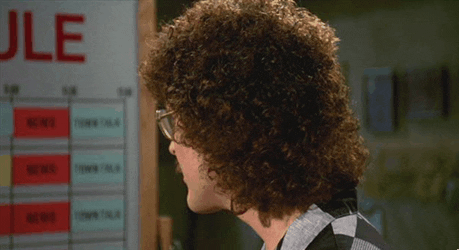Is it better
Is it better now?
Are we better
Are we better now?
Is it better
Is it better now?
Are we better
Are we better now?
All we needed was a lifeline (is it better, is it better now?)
We swore we’d be better than the last time (are we better, are we better now?)
Tell me, tell me that you’re all right (is it better, is it better now?)
I’m not the generational divide (are we better, are we better now?)
Do these lyrics from Blink 182’s song “Generational Divide” song sound somewhat like a reflection we do as generations reflecting on our own society? Is it better now? It depends on which generation you ask.

“I used to walk to school every day in 6 feet of snow, uphill both ways.”
I recall and still hear my parents and their friends engaging in the “when I was your age” rant, but guess what? I now find myself saying it to my kids. As tvtropes.com explains, the purpose for these rants it to express how “advantages have made the young people of today soft, lazy, spoiled, or worse; the hardships gave people moral fiber.” Each generation is guilty of falling into this trap, but with the advancement of technologies and societal norms/expectations, younger generations aren’t doing things the way we have done them. Does this make them worse off or are they navigating the world in their own way, much like we did before our generational predecessors? There may be mistakes that they make along the way, but that’s part of the journey, isn’t it?
How can we bridge the gap?
I came across a blog on policemag.com written by Brian Cain titled “How Boomers and Gen Y Can Bridge the Tech Gap“. It addressed how people in different generations need to put aside their disgruntled attitude towards the older and younger generations and work together to bridge the gap. “Boomers need to stop bellyaching about the ADHD tendencies of millennials, and millennials have to stop discounting the treasure chest of knowledge stored in the minds of the boomers. If we just face the fact that we must work together to make the organization more successful, we can have a symbiotic relationship that takes the department to new heights” (Cain, 2013). Ideally, yes this is great. However, it takes a lot for people to change their attitudes. One approach mentioned in this article “sort of follows the “I Do, We Do, You Do” (pg. 28) gradual release of responsibilities model that most teachers use for literacy:
- I do, you watch.
- I do, you help.
- You do, I help.
- You do, I watch.
- You do, someone else watches.
For those that are tech savvy, this approach can work to help older generations become more comfortable with the changes, especially in technology. They may be more willing to “buy in” and have an understanding of how younger generations are using technology to benefit them daily. This is my approach to my major project. I’m trying to learn about digital awareness, navigation, and interactions through my daughters’ experiences and understanding. This is what Dallia Wilson-Scott, who wrote the article “The Digital Generation Gap and the Management of Information“, advises as well to bridge the gap. We have to “start thinking more like our kids. Ask them for advice about technology and stay up to date on the latest apps.” Rather than deny them access, try to understand the role technology plays in their lives.
However, not all millennials are tech-savvy like we may think. Just because they are born into it doesn’t mean they can effectively and efficiently use it. “We don’t innately know how to use these emerging forms of technology. We are forced to learn it because of our dependence on it” (Cain, 2013). As Alec pointed out in our discussion, “no one is born a native speaker of digital in the same way that no one is born a native speaker of any language. Through context, immersion, and practice they learn.”
Much like Catherine noted, we need to move away from the fear-mongering approach to technology use to a more responsible citizen approach. The fearful approach is perpetuating the gap because it creates a reluctance to learn how to navigate appropriately. The responsibility for this type of education is starting to fall on schools as we are seeing more and more students, even in primary grades, start to have devices at school. Although this puts more on our plates as teachers, I feel it’s important to address as technology is now how students socially interact with friends and strangers as well.
How do you incorporate digital citizenship in your classroom and with your families to help bridge the gap of digital generations?

“Lemme tell you somethin’, you whiny little snot
There’s somethin’ wrong with all you kids today
You just don’t appreciate all the things you got
We were hungry, broke, and miserable
And we liked it fine that way!”
— “Weird Al” Yankovic, “When I Was Your Age”
I am part of gen Y, although I think I identify better with gen X. I love that you bring up how we think one generation is always better than the one that comes after it, but that’s a very subjective view. In a perfect world, it would work so well to have everyone just get over it! I do not do much with digital citizenship previously (I just assumed they knew how – shame!), but I am already planning on what I CAN and SHOULD do.
LikeLike